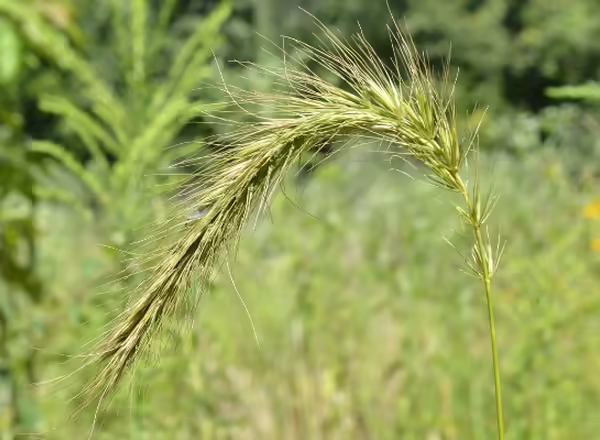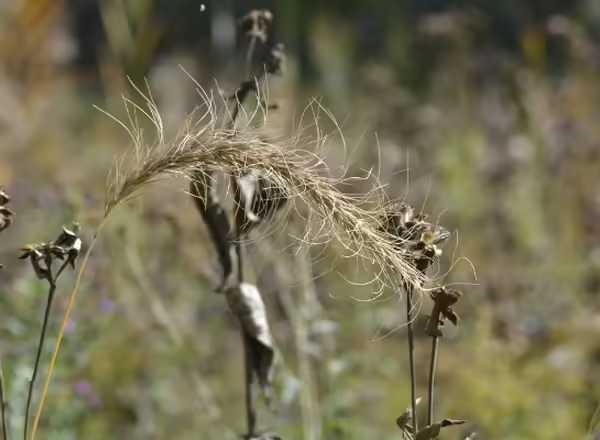General characteristics of ryes
Sometimes it's relatively easy to identify a grass at the genus level, but more challenging to tell apart the individual species. Rye grasses in the Elymus genus have some shared characteristics that differentiate them pretty easily from other grasses.
- Cool-season grasses, meaning they start to green up in spring and flower in early to mid-summer. They will retain their seed heads into winter or even into the next growing season.
- They all have auricles, which are small, arm-like extensions of leafy material in the collar region. Auricles arise from the base of the leaf blade and wrap around the stem.
- These grasses also have a white membranous ligule.
- The leaves are in general pretty non-descript, but they are about 1/2 to 2/3 inch across, usually pretty shiny, and oftentimes they curve in the collar region so their undersides face up.
- The inflorescences are spikes with awned spikelets (not all ryes have awns, but the ones below do). The way the spike is held (erect or drooping) and the length and direction of the spikelets and awns can be used to help distinguish them.
Below is a closer look at four common rye grasses found in every county in Illinois.
Need a refresher on grass identification terms, like ligule and spikelet? Check out this blog post!
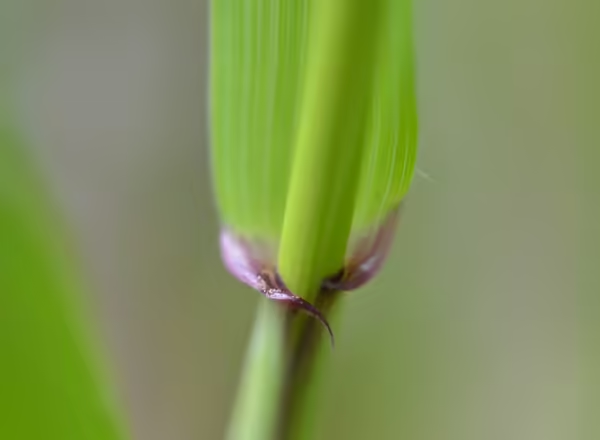
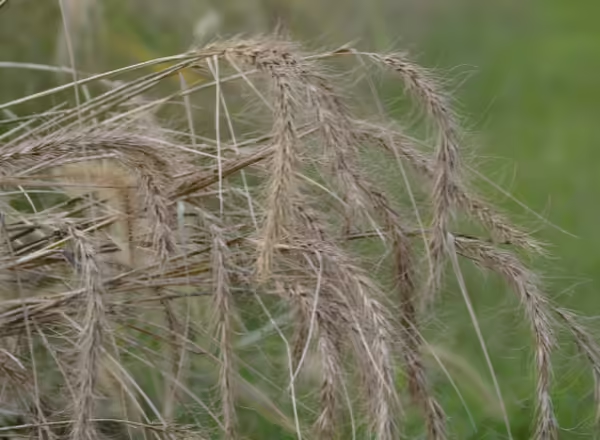
Bottlebrush Grass
Bottlebrush Grass, Elymus hystrix, has a common name that accurately describes the appearance of the plant. This grass has dark green, hairless, rather floppy leaves. It grows between 3 and 5 feet tall. You typically find it in the woods or on a woodland edge.
The inflorescence of bottlebrush grass is a spike, 3-8 inches long, which can either be held erect or droop. The spikelets each have a pair of awns that are 1-2 inches in length. The spikelets are held 90 degrees away from the rachis (stem of the inflorescence) and are spread out along the rachis. Altogether, this leads the inflorescence to resemble a bottlebrush.
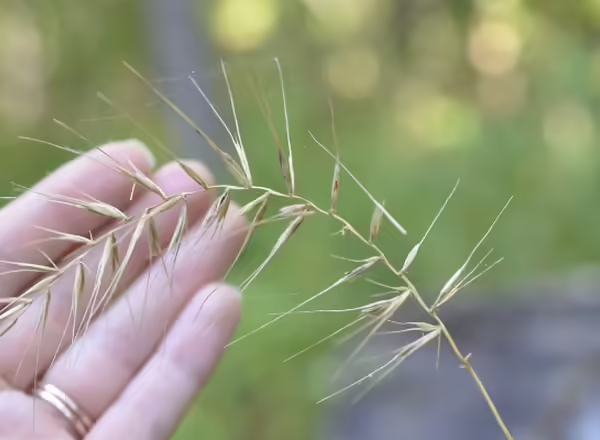
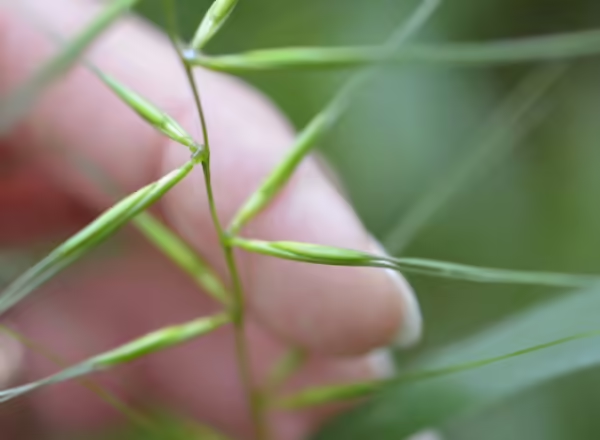
Bottlebrush Grass, Elymus hystrix, is a native, cool season grass that can be found in the woods. It grows between two and a half and five feet tall. Its leaves are often twisted where they join the stem so the underside of the leaf faces up, and they also droop at...
Virginia Wild Rye
Virginia Wild Rye, Elymus virginicus, is found in a range of habitats, from the woods to prairies. It has weak, shiny, hairless leaves and grows between 2 and 4 feet tall.
The inflorescence of this grass is a spike, 2 to 6 inches long, which is typically held erect, but can sometimes droop. The spikelets are densely clustered along the rachis. The awns are shorter in this grass than Bottlebrush Grass, typically not more than an inch. Both spikelets and awns are held up towards the top of the inflorescence. The inflorescence typically emerges right above a leaf, so the bottom of the spike is inside the sheath.
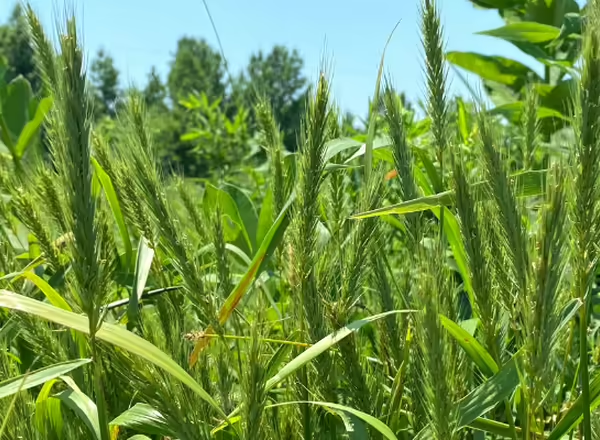
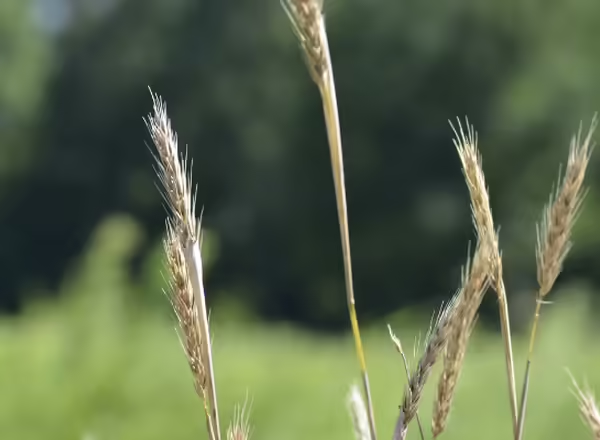
Silky Wild Rye
Elymus villosus, Silky Wild Rye, can be found in woods and woodland edges. It’s 2 to 3 feet tall. The leaves of this rye can be slightly hairy, and the leaf sheaths are covered in white hairs that are spreading, meaning they are held out from the stem, rather than hug it.
The inflorescence of this species will nod, or droop to the side. It’s a bit smaller in size than some of the other ryes, only 3 to 4 inches long. The spikelets are densely clustered in the spike and point up. The awns of this grass spread outwards slightly.
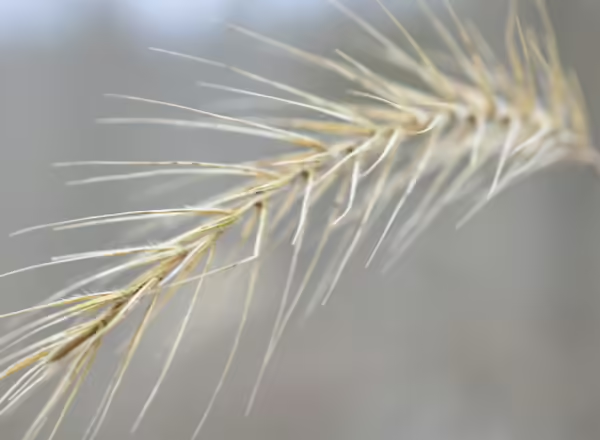
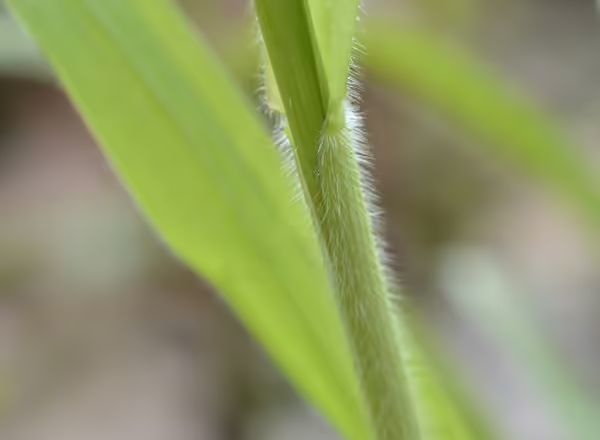
Canada Wild Rye
Canada Wild Rye, Elymus canadensis, despite the name, is a native grass to Illinois. This one prefers some sun, so you’ll find it in prairies and woodland edges, but not typically in dense woods. It will grow between 3 to 5 feet tall.
The spike inflorescence of this grass grows between 5 and 9 inches long, and it droops strongly. The spikelets of this grass are held up towards the top of the inflorescence. The awns, 3/4 to 1 1/2 inches in length, will curve strongly backwards as the grass matures. This produces a very distinctive inflorescence that can be picked out from quite a distance.
